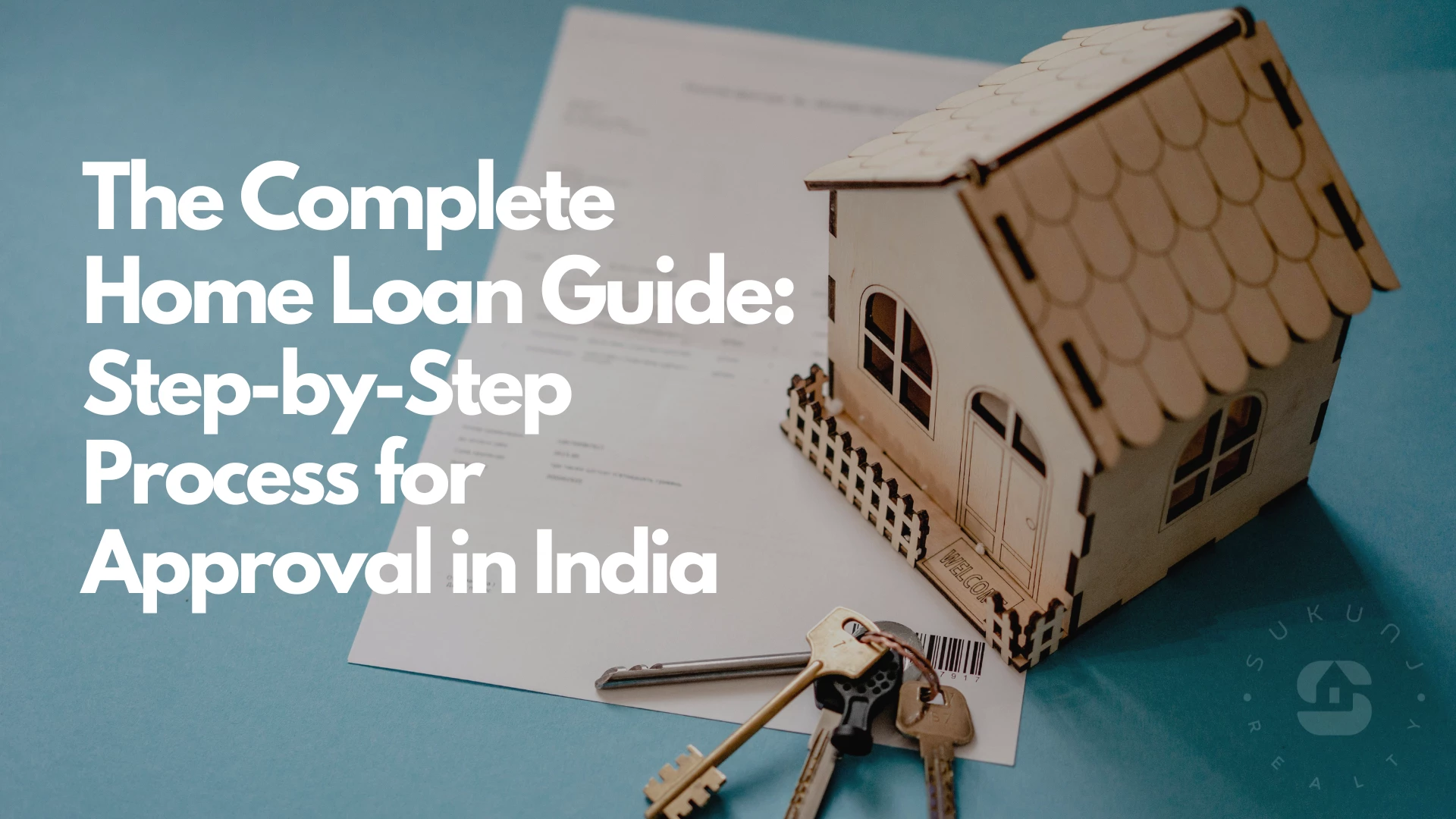Securing a home loan in India can seem complex, but breaking down the process into clear, manageable steps can simplify it. Here is a detailed guide to help you understand each stage of the home loan process.
- Check Your Eligibility
Before applying for a home loan, assess your eligibility. Banks consider several factors:
Age: Usually, banks prefer applicants between 21 and 65 years.
Income: Steady and sufficient income to repay the loan.
Employment: Stable job history or consistent business income for self-employed individuals.
Credit Score: A good credit score (usually 750 and above) increases the chances of loan approval.
Existing Loans: Current EMIs and financial obligations should not exceed a certain percentage of your income.
Use online eligibility calculators on bank websites to get an estimate of your eligibility. - Select the Loan Amount and Tenure
Determine the loan amount based on the property value and your financial capacity. Consider:
Down Payment: Typically, banks finance up to 80-90% of the property value, and the rest is your down payment.
Tenure: Choose a tenure that balances EMI affordability and total interest cost. Longer tenures reduce EMIs but increase the overall interest paid.
EMI Calculation: Use EMI calculators to find an EMI that fits your budget without straining your finances. - Submit the Application
Fill out the home loan application form with accurate personal, professional, and financial details. Ensure the information is correct to avoid delays. Include:
Personal Information: Name, age, marital status, number of dependents.
Employment Details: Employer, designation, years of service, business details for self-employed.
Financial Information: Income, existing liabilities, other loans.
Property Details: Location, type, cost, builder details.
- Pay the Processing Fee
Most banks charge a processing fee to cover the costs of loan application evaluation and verification. This fee is typically non-refundable and ranges from 0.25% to 1% of the loan amount. Ensure you get a receipt for this payment. - Discussion with the Bank
After submitting your application, have a detailed discussion with the bank representative. They might ask about:
Your financial stability and ability to repay the loan.
Details about your employment or business.
The property you intend to buy, including its value and construction status.
Any other relevant financial obligations or plans. - Valuation of the Documents
The bank will verify your submitted documents to ensure they are genuine and complete. This includes:
Identity Proof: Aadhaar card, PAN card, passport, voter ID, or driving license.
Address Proof: Aadhaar card, passport, utility bills, rental agreement.
Income Proof: Salary slips, IT returns, Form 16, bank statements.
Property Documents: Sale agreement, title deeds, NOC from builder or society, approved building plan. - Submit the Documents
Prepare a comprehensive set of documents to submit. Commonly required documents include:
Identity Proof: Aadhaar card, PAN card, passport, voter ID, driving license.
Address Proof: Aadhaar card, passport, utility bills, rental agreement.
Income Proof: Salary slips, Form 16, IT returns, bank statements.
Property Documents: Sale agreement, title deed, no-objection certificate (NOC) from builder/society, approved building plan, property tax receipts. - The Sanction/Approval Process
The bank assesses your application and documents to determine your loan eligibility. Key factors include:
Your credit score and credit history.
Income and repayment capacity.
Authenticity and value of the property.
Compliance with the bank’s internal policies.
If your application meets the bank’s criteria, you will receive a sanction letter detailing the loan amount, interest rate, tenure, EMI, and other terms. - Get the Loan Sanctioned
The sanction letter is a formal offer from the bank. It includes:
Loan Amount: The amount approved by the bank.
Interest Rate: Fixed or floating rate applicable.
Tenure: Duration of the loan repayment period.
EMI: Monthly installment amount.
Terms and Conditions: Any additional terms or conditions.
Review the sanction letter carefully and sign it if you agree with the terms. Return a signed copy to the bank. - Processing the Offer Letter
After accepting the sanction letter, the bank issues a detailed offer letter. This document includes:
Loan amount, interest rate, tenure, EMI schedule.
Terms and conditions of the loan.
Any additional charges or fees.
Ensure you read and understand the offer letter thoroughly before signing. Seek clarification on any points you don’t understand. - Processing the Property Papers Followed by a Legal Check
Submit the property documents for a legal check by the bank’s legal team. They will verify:
Title Deed: Ensures the seller has a clear and marketable title to the property.
Sale Agreement: Confirms the terms of the sale and the agreed price.
NOC: No objection certificate from the builder or society.
Other Documents: Property tax receipts, possession certificate, encumbrance certificate.
This step ensures the property is legally sound and free from disputes. - Processing a Technical Check & the Site Estimation
A technical expert from the bank will inspect the property to assess its value and construction quality. This involves:
Site Visit: Physical inspection of the property to check construction progress and adherence to approved plans.
Valuation Report: An estimate of the property’s market value, which helps the bank determine the loan amount.
Construction Quality: Assessment of construction quality and any potential issues. - The Final Loan Deal
After successful legal and technical checks, finalize the loan deal. This includes:
Confirming the loan amount, interest rate, tenure, and EMI.
Agreeing to any additional terms or conditions imposed by the bank.
Ensuring you have a clear understanding of the entire loan process and repayment obligations. - Signing the Agreement
Sign the loan agreement, which is a legally binding contract between you and the bank. The agreement includes:
Loan Details: Amount, interest rate, tenure, EMI schedule.
Repayment Terms: Mode and frequency of EMI payments.
Penalties: Charges for late payment or prepayment.
Other Conditions: Any other terms agreed upon.
Make sure you read and understand all clauses before signing. Keep a copy of the signed agreement for your records. - Get the Loan Disbursed
Once the agreement is signed, the bank disburses the loan amount. The disbursement process includes:
Direct Transfer: The loan amount is usually transferred directly to the seller’s account as per the sale agreement.
Staged Disbursement: In case of under-construction properties, the loan may be disbursed in stages based on construction progress.
Completion of Formalities: Ensure all documentation and formalities are complete before disbursement.
With these detailed steps, you can confidently navigate the home loan process in India, securing the necessary funds to purchase your dream home.






